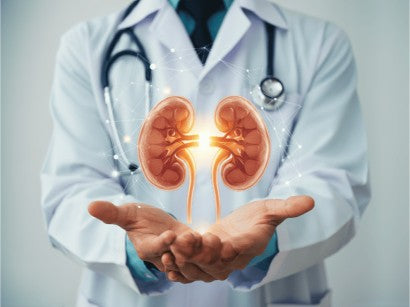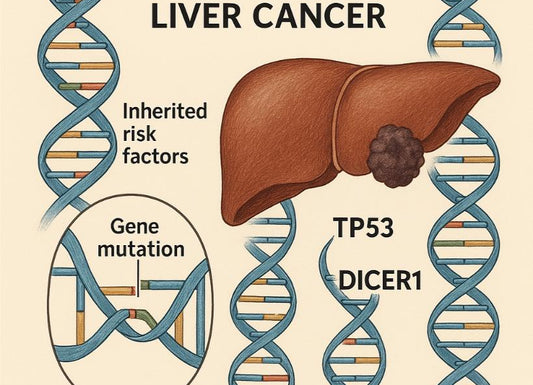How to Reverse Kidney Damage from Diabetes
 Written By
Abel Tamirat, MD
Written By
Abel Tamirat, MD

Being diagnosed with diabetic kidney damage can be overwhelming. You might wonder if there’s any way to reverse kidney damage from diabetes or if the situation is hopeless. The truth is that while complete reversal of established kidney damage is usually not possible, you can take powerful steps to slow or even halt its progression – and in some early cases, potentially improve kidney function. Diabetes-related kidney damage (known as diabetic nephropathy) is a common issue – about 1 in 3 people with diabetes develops chronic kidney disease (CKD) over time. The good news is that it can be managed. By understanding how diabetes affects your kidneys and making proactive changes, you can protect your kidneys and give them the best chance to stay healthy. This article will explain what diabetic kidney damage is, whether it can be reversed, and practical steps you can take, from blood sugar control and diet to medical treatments and emotional support to empower you in your kidney health journey.
How Diabetes Harms Your Kidneys
Diabetic kidney disease is caused by long-term high blood sugar, which damages the small blood vessels (glomeruli) inside the kidneys.
Over time, excess glucose causes:
-
Blood vessel thickening and scarring
-
Leaky filters, allowing protein into the urine (early sign: microalbuminuria)
-
Reduced waste filtration
-
Increased blood pressure
This damage progresses silently at first. Without intervention, it can lead to chronic kidney disease (CKD), kidney failure (end-stage renal disease), and the need for dialysis or transplantation.
Important: Diabetes is the number one cause of kidney disease worldwide.
Regular check-ups, including blood tests (understanding creatinine levels) and urine tests (protein levels), are critical to catching kidney issues early—before significant damage is done.
Can Kidney Damage from Diabetes Be Reversed?
You’re likely asking the big question: Can you reverse diabetes-related kidney damage? The honest answer is not completely – especially if damage is advanced – but you can absolutely slow it down or stop it from getting worse. In fact, with early intervention, some people see improvements in kidney function or a return of abnormal levels (like protein in urine) back to normal.
In the early stages of kidney damage, such as detecting small amounts of protein in urine, aggressive management of diabetes and blood pressure may partially reverse the changes. Research from Joslin Diabetes Center found early diabetic kidney injury can sometimes return to normal with proper care. In a study, 58% of patients improved their kidney function by tightly controlling blood sugar, blood pressure, and cholesterol. Early action to reduce kidney strain can promote healing. However, in later stages, where significant scarring and loss of function occur, reversal is unlikely as damaged nephrons don’t regenerate. Still, progression can often be slowed or stopped. Many people with diabetic kidney disease never reach kidney failure. With the right steps, you can preserve remaining kidney function and improve your health outlook.
In summary, “reversing” kidney damage mostly means halting its progression and optimizing the function that remains. Think of it as putting the brakes on the disease process. The sooner you pump the brakes, the better your outcome. In the next sections, we’ll discuss exactly how to do that. It starts with controlling the factors that caused the damage in the first place – high blood sugar and high blood pressure and adopting kidney-friendly habits. While a complete cure isn’t realistic, many patients stabilize their kidney health and avoid dialysis by following the steps below. This proactive approach is essentially how you reverse the trajectory of kidney disease from diabetes.
8 Steps to Reverse, Slow, or Halt Kidney Damage
1. Tight Blood Sugar Control
High blood sugar damages the kidneys over time. The more consistently you stay within target ranges, the less ongoing damage occurs.
Tips to optimize blood sugar:
-
Aim for an HbA1c around 7% or as personalized by your doctor.
-
Take diabetes medications as prescribed.
-
Ask about SGLT2 inhibitors (like empagliflozin) as these drugs not only lower glucose but also directly protect the kidneys.
-
Follow a high-fiber, low-glycemic diet.
-
Exercise regularly, even walking daily helps.
-
Use a glucose monitor to track trends. (Learn more about blood sugar monitoring)
Each well-managed day gives your kidneys breathing room to recover.
2. Lower Your Blood Pressure
High blood pressure damages the kidney filters.
Management strategies:
-
Aim for BP < 130/80 mmHg.
-
Take ACE inhibitors (like lisinopril) or ARBs (like losartan) — they lower BP and protect kidneys.
-
Limit salt (ideally under 2g sodium per day).
-
Manage stress with meditation, yoga, or deep breathing.
-
Moderate alcohol intake.
Tight blood pressure control is one of the biggest predictors of kidney health longevity.
3. Follow a Kidney- and Diabetes-Friendly Diet
What you eat either supports or stresses your kidneys.
Kidney-friendly diet basics:
-
Choose fresh, whole foods: berries, leafy greens, peppers, cauliflower, apples, fish, poultry.
-
Limit processed foods, sodium, and sugars.
-
Moderate protein intake (around 0.8g/kg body weight unless your nephrologist advises otherwise).
-
Watch potassium and phosphorus if your kidney doctor recommends it.
-
Stay hydrated — water is best! (Learn signs of dehydration)
Tip: Consult a renal dietitian for a personalized meal plan that balances diabetes and kidney needs.
4. Achieve and Maintain a Healthy Weight
Even small amounts of weight loss have big health impacts.
-
Losing 5–10% of your body weight improves blood sugar and BP control.
-
Reduce insulin resistance.
-
Lower inflammatory markers that contribute to kidney disease.
Weight management tips:
-
Pair healthy eating with 30 minutes of moderate exercise most days.
-
Use small, sustainable goals.
-
Track progress with an app or journal.
5. Control Your Cholesterol
High LDL cholesterol and triglycerides damage kidney blood vessels.
How to manage cholesterol:
-
Eat healthy fats (olive oil, avocados, salmon).
-
Increase fiber (oats, beans, fruits).
-
Take statins if prescribed.
-
Limit saturated and trans fats.
Cholesterol management protects both your heart and your kidneys.
6. Avoid Nephrotoxic Substances
Protect your kidneys from extra damage by avoiding harmful substances.
Avoid or limit:
-
NSAIDs (like ibuprofen, naproxen) - opt for acetaminophen when possible.
-
Herbal supplements — many are unsafe for the kidneys.
-
Contrast dye scans — inform doctors about your kidney status.
-
Tobacco and illicit drugs — extremely damaging.
Always check with your healthcare provider before taking new medications or supplements.
Learn more about how nephrotoxic substances can affect kidney function.
7. Quit Smoking and Limit Alcohol
Smoking:
-
Constricts kidney blood vessels.
-
Accelerates CKD progression.
-
Raises BP and worsens blood sugar control.
Alcohol:
-
In moderation (1 drink/day for women, 2 for men) may be okay.
-
Avoid binge drinking.
-
High alcohol intake worsens diabetes and kidney outcomes.
Quitting smoking and moderating alcohol protects your kidneys and improves your overall health trajectory.
8. Stay Well-Hydrated
Adequate hydration helps your kidneys efficiently filter waste.
-
Aim for 6–8 cups water/day (adjust if exercising or hot weather).
-
Avoid sugary sodas and excessive caffeine.
-
During illness (fever, vomiting), prioritize rehydration.
Note: If you have advanced CKD or heart failure, your fluid needs may differ. Always follow your doctor’s instructions.
Medical Treatments That Protect Your Kidneys

Along with lifestyle changes, medications play a crucial role.
-
ACE inhibitors/ARBs - lower BP and reduce protein leakage.
-
SGLT2 inhibitors - protect kidneys independently of sugar lowering.
-
GLP-1 receptor agonists support weight loss and heart health.
-
Finerenone (Kerendia) - a new drug shown to prevent scarring and inflammation in diabetic CKD.
-
Statins protect the cardiovascular system.
Early intervention with these treatments dramatically improves long-term kidney outcomes.
In advanced cases, dialysis or kidney transplantation may eventually be necessary, but with aggressive management, many people avoid reaching this stage.
Learn more about Kidney Function Tests at Home.
Monitoring Your Kidney Health
"Knowledge is power" applies perfectly here.
Regular monitoring checklist:
-
eGFR blood tests at least annually (more if declining).
-
Urine protein/creatinine ratio annually.
-
Blood pressure monitoring (home BP cuff recommended).
-
HbA1c every 3–6 months.
-
Cholesterol levels regularly.
-
Foot and eye exams annually.
-
Consider at-home kidney test kits between doctor visits for early warning signs.
Stay proactive: Monitoring detects problems early enough to intervene and adjust your care plan.
Learn more about urinalysis and what indicates a UTI to catch infections early and protect your kidneys.
Common Misconceptions About Diabetes and Kidney Damage

Myth 1: Only people with Type 1 diabetes develop kidney problems.
Fact: Both Type 1 and Type 2 diabetes can cause kidney damage. Diabetes remains the leading cause of kidney failure worldwide, affecting people with either type.
Myth 2: Good blood sugar control means I’m safe from kidney disease.
Fact: Tight blood sugar control greatly reduces the risk but doesn’t eliminate it. High blood pressure, genetics, and other factors also contribute to diabetic kidney disease, making regular monitoring essential.
Myth 3: I’ll feel symptoms if my kidneys are getting damaged.
Fact: Kidney disease is often silent in the early stages. Symptoms like swelling or fatigue usually appear only when the damage is advanced. Routine screening with urine and blood tests is crucial.
Myth 4: Normal test results mean I don't need future kidney checks.
Fact: Kidney damage can develop over time, even after normal results. People with diabetes should have annual kidney function tests to catch any changes early when intervention is most effective.
Myth 5: Kidney damage is inevitable if I have diabetes.
Fact: Many people with diabetes never develop kidney disease. Effective blood sugar, blood pressure, and cholesterol management can significantly lower the risk and prevent serious complications.
Myth 6: Once kidney disease starts, there’s nothing I can do.
Fact: Early-stage diabetic kidney disease can often be slowed or stabilized. Lifestyle changes, medications, and proper management can delay or even prevent progression to dialysis.
Myth 7: A high-protein diet is good for diabetics regardless of kidney health.
Fact: Excessive protein can strain the kidneys, especially in those already showing signs of damage. Moderation and individualized dietary planning are important for long-term kidney health.
Myth 8: Managing diabetes is just about blood sugar control.
Fact: Protecting kidneys involves more. Blood pressure medications like ACE inhibitors and new diabetes drugs such as SGLT2 inhibitors also play critical roles in preserving kidney function.
Emotional Health: The Missing Piece
Managing a chronic illness takes an emotional toll.
-
Seek therapy or counseling if needed.
-
Join support groups (in-person or online).
-
Practice mindfulness, meditation, or gentle yoga.
-
Stay connected with family and friends.
-
Celebrate your wins, even small ones.
Mental health and physical health are deeply connected. Caring for your mind supports your body’s healing.
Preventing Future Kidney Damage

After working hard to stabilize or improve your kidney health, it’s natural to want to protect your progress. Prevention is an ongoing effort. Many of the habits you’ve already built not only slow current damage but also help prevent future problems.
Here’s how to maintain your kidney health for the long run, especially if you are managing diabetes.
Keep up with the healthy habits.
The changes you’ve made—controlling blood sugar, keeping blood pressure in check, following a kidney-friendly diet, exercising, and not smoking—should stay part of your daily routine. Even if your kidney numbers improve, consistency matters. Think of it like managing diabetes: it’s a lifelong commitment. Staying consistent can reward you with years of stable kidney function.
Stay educated.
Medical advances happen every year. New medications like SGLT2 inhibitors and finerenone are examples. Stay informed through reputable websites, educational seminars, or conversations with your healthcare team. Recognizing early signs of infection, medication side effects, or other concerns can help you act quickly and prevent complications.
Keep up with your vaccines.
Infections like the flu, pneumonia, and COVID-19 can temporarily or permanently harm kidney function. Protect yourself by staying up to date with vaccines, including your annual flu shot and others recommended for your health condition.
Be cautious with supplements.
Fitness supplements and high-protein shakes may stress your kidneys if overused. Always talk to your doctor before starting new supplements. When possible, prioritize real foods over powders or pills.
Manage other health conditions.
Heart disease, liver problems, and even sleep apnea can impact kidney health. Managing all of your health conditions helps support your kidneys too.
Schedule regular eye and foot exams.
Diabetes affects multiple organs. Eye and foot exams can prevent infections or complications that might worsen your overall health and indirectly affect your kidneys.
Stay hydrated — always.
Proper hydration helps your kidneys function efficiently. Be especially mindful during hot weather, fasting, or illness.
Plan ahead with your doctor.
Ask about next steps if your kidney function changes. Knowing when to see a specialist or how to adjust treatments can prevent emergencies.
Use technology and reminders.
Apps and alarms can help you stay on track with medications, doctor appointments, and hydration goals.
Know when to seek help.
If you notice symptoms like foamy urine, swelling, or significant changes in urination, don’t wait—contact your healthcare provider right away. Early treatment makes a difference.
Learn about the stages of CKD to better understand your journey.
Conclusion: You Have the Power
While complete reversal of diabetic kidney disease may not be achievable in all cases, stabilizing or improving kidney function is often possible with appropriate intervention. Every decision you make, whether adhering to a balanced diet, maintaining medication compliance, engaging in regular physical activity, or attending scheduled medical evaluations, contributes meaningfully to preserving your kidney health. You are not without options. Through informed management, consistent care, and ongoing support, it is entirely possible to slow the progression of kidney disease and maintain a high quality of life. Remain proactive, stay engaged with your care team, and know that protecting your kidney function is a goal worth pursuing.
With Ribbon Checkup’s at-home urine test, you can easily monitor key markers like protein and glucose levels critical indicators of kidney health. Simply dip the test strip, scan it with the free Ribbon app, and get instant, lab-grade results on your phone. Early detection empowers you to act quickly and protect your kidneys.
Learn more or order your Ribbon Checkup kit here.
Written by Abel Tamirat, MD
Dr. Abel Tamirat is a licensed General Practitioner and ECFMG-certified international medical graduate with over three years of experience supporting U.S.-based telehealth and primary care practices. As a freelance medical writer and Virtual Clinical Support Specialist, he blends frontline clinical expertise with a passion for health technology and evidence-based content. He is also a contributor to Continuing Medical Education (CME) programs.
Related Resources
References
-
Centers for Disease Control and Prevention. (2024, May 15). Diabetes and kidney disease: What to eat? Retrieved from https://www.cdc.gov/diabetes/healthy-eating/diabetes-and-kidney-disease-food.html
-
Cleveland Clinic. (2022, September 15). Diabetes-related nephropathy: Causes, symptoms & treatment. Retrieved from https://my.clevelandclinic.org/health/diseases/24183-diabetic-nephropathy
-
Cromie, W. J. (2003, June 12). Diabetic kidney disease is reversible. Harvard Gazette. Retrieved from https://news.harvard.edu/gazette/story/2003/06/diabetic-kidney-disease-is-reversible/
-
Healthline. (2018, November 21). Kidney health: 8 ways to keep your kidneys healthy. (J. Fletcher, Author). Retrieved from https://www.healthline.com/health/kidney-health
-
Healthline. (2022, June 3). What to know about the connection between diabetes, depression, and kidney disease. (N. Lovering, Author; T. Taft, PsyD, Medical Reviewer). Retrieved from https://www.healthline.com/health/type-2-diabetes/connection-diabetes-depression-kidney-disease
-
Mayo Clinic. (2023, October 24). Diabetic nephropathy (kidney disease) – Treatment. Mayo Foundation for Medical Education and Research. Retrieved from https://www.mayoclinic.org/diseases-conditions/diabetic-nephropathy/diagnosis-treatment/drc-20354562
-
Morales-Brown, L. (2022, February 9). Can people reverse kidney damage from diabetes? Medical News Today. Retrieved from https://www.medicalnewstoday.com/articles/how-to-reverse-kidney-damage-from-diabetes
-
National Institute of Diabetes and Digestive and Kidney Diseases. (2018). Keeping kidneys safe: Smart choices about medicines. Retrieved from https://www.niddk.nih.gov/health-information/kidney-disease/keeping-kidneys-safe
-
National Kidney Foundation. (n.d.). Stress and your kidneys. Retrieved from https://www.kidney.org/kidney-health/stress-and-your-kidneys

Dr. Abel Tamirat is a licensed General Practitioner and ECFMG-certified international medical graduate with over three years of experience supporting U.S.-based telehealth and primary care practices. As a freelance medical writer and Virtual Clinical Support Specialist, he blends frontline clinical expertise with a passion for health technology and evidence-based content. He is also a contributor to Continuing Medical Education (CME) programs.



